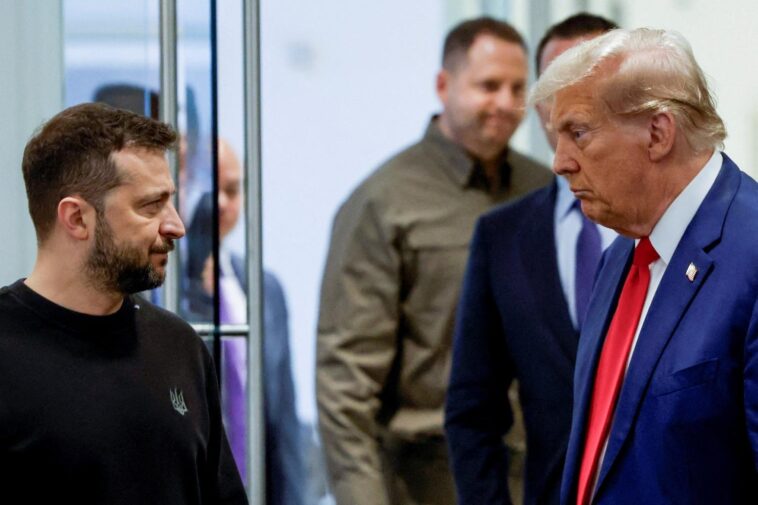The Trump administration is currently developing a strategy to channel arms resources towards its allies. This prioritization particularly favors nations that are committed to equipping Ukraine with weapons from their individual reserves, with a notable focus on Patriot defense systems.
Among these nations, Germany has been catapulted to the forefront of this new initiative. The plan is to empower Berlin to redirect two of its own Patriot defense systems to Ukraine. This ensures a swift replacement of the German Patriots by U.S. systems.
In the realm of U.S. foreign policy, this assurance to Germany represents a debut effort from the Pentagon to expedite arms shipments to Ukraine. It emerged as a crucial strategy following Trump’s recent declaration of support for augmenting Ukraine’s military materials.
It is important to underscore the intricacies involved with distributing Patriots and similar arms to Ukraine. Western defense manufacturing capacities are currently grappling with Ukraine’s escalating demands for assistance in safeguarding its key urban areas and frontline troops amidst Russian hostilities.
This strategy of accelerating the Patriot supply to Ukraine, by promptly supplementing Germany’s inventory through U.S. production, aligns seamlessly with Trump’s promise. The President has clearly expressed his intention for NATO allies to share the financial burden of additional military resources intended for Ukraine.
This novel arrangement closely mirrors a decision sanctioned in 2024 by the Biden administration. Back then, Ukraine had been prioritized to directly receive air defense apparatus from the U.S. In the current scenario, as an increasing number of nations agree to supply Ukraine with Patriots from their stockpiles, the Trump administration is gearing up to persistently evaluate plans for forthcoming consignments, with prioritized focus on these cooperative allies.
In the coming week, the Trump administration anticipates solidifying more agreements with its allies, aiming towards the provision of supplementary weapons. U.S. Defense Secretary Pete Hegseth is slated to virtually engage with other NATO defense ministers in a strategic discussion concerning aid to Kyiv.
Following this dialogue, a dedicated meeting encompassing countries in possession of Patriot systems has been scheduled. The conversation will continue to revolve around the ongoing assistance to Ukraine and the effective distribution of weapons.
In tandem with these developments, the Trump administration is pursuing specialized agreements with NATO countries regarding the purchase of weapons for Ukraine’s defense, a process which will be overseen by the Pentagon. These agreements would not only cover the supply of Patriots but also a broad spectrum of offensive and defensive weapons which NATO allies would provide to Kyiv, followed by a repurchase scheme with the U.S.
Several nations, including Germany, Norway, Denmark, the Netherlands, Sweden, the UK, Canada, and Finland, have expressed their commitment to the initiative. Furthermore, based on statements from multiple European officials, there’s a likelihood of other European countries extending their assistance to Kyiv after finalizing plan specifics.
However, both U.S. and European officials echo concerns about the timeline for delivering the additional weapons to Ukraine. The European capitals are waiting for clarification from Washington on the specific types of ammunition and weapons to be supplied, the distribution schedule, and any restrictive measures on the use of this ammunition against potential Russian threats.
Earlier this week, Trump made a bold commitment to provide more armament for Ukraine. Coupled with this pledge, he issued a stern warning to Russia, promising a 100% tariffs consequences if President Vladimir Putin does not agree to a ceasefire in the next 50 days.
Moreover, Trump stated that NATO member countries would bear the cost of these weapons heading to Ukraine. To illustrate the financial burden, each Patriot system, including its battery and missiles, costs upwards of a billion U.S. dollars, with individual missiles priced around four million dollars each.
Simultaneously, clarity is sought on the details of the plan, especially on who will supply the Patriot systems. Some of the U.S.’s European allies were seemingly surprised by Trump’s announcement of this plan, leaving the specifics of European involvement and the intended source of the Patriots up in the air.
In conclusion, these proposed plans, if effectively implemented, carry the potential to dramatically alter the balance of military power and aids to Ukraine. Yet, much depends on the unity and financial commitment of NATO allies, and their willingness to collaborate in navigating the intricate logistics of this initiative.

